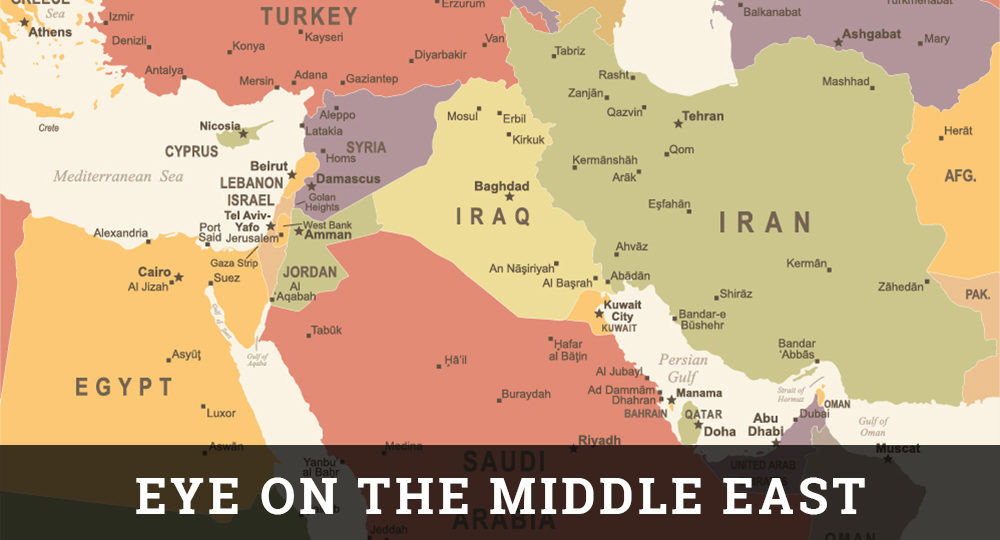Eye on the Middle East Nov/Dec 2013
It was merely a handshake. But it was no ordinary handshake. It was one of a kind, seen by millions around the world. It was proclaimed as the event that sealed the deal that would alter the geopolitical landscape of the Middle East. Many thought it would finally bring peace.
Twenty years ago on the White House lawn in Washington, DC, Palestine Liberation Organization (PLO) Chairman Yasser Arafat and Israeli Prime Minister Yitzhak Rabin signed the Oslo accords. Since then, nothing has been the same.
The goal of the Oslo accords was to “put an end to decades of confrontation and conflict…and achieve a just, lasting, and comprehensive peace.” The formula was simple: Israel gave up land for the promise of peace and recognition as a legitimate state. So sure was the world it would work that both men received the Nobel Peace prize.
Did it work? The question is a sad joke. In the 20 years since Oslo, three American presidents, seven American secretaries of state, five Israeli prime ministers, and two Fatah (PLO) leaders have come and gone. Yet the two parties can’t even agree on a place to hold talks.
The fact is the peace initiative began to crumble almost before the ink had dried. On May 10, 1994, a mere eight months after the historic handshake, Arafat told worshipers in Arabic at a mosque in Johannesburg, South Africa, that the agreement was a ruse.
For Arafat, Oslo was a means to acquire land without war. It bought him time to grow stronger and bilk billions of dollars from the United States and Europe. His plan was to stall and wait, all the while screaming to his people in Arabic his actual goal: “And no, the permanent state of Israel—no! It is the permanent state of Palestine.”
In 2000, Arafat turned down Israeli Prime Minister Ehud Barak’s offer of an Arab state consisting of 97 percent of the West Bank and 100 percent of the Gaza Strip, with East Jerusalem as its capital. He then instituted the Second Intifada, killing more than 1,000 Israelis. He churned out materials of hatred toward Israel, indoctrinating his people through radio, television, school curricula, and preschool songs and poems. This tactic insured a full supply of suicide bombers for generations to come.
Upon his death in 2004, his successor, Mahmoud Abbas, continued the ruse. In 2008, Abbas rejected Israeli Prime Minister Ehud Olmert’s unprecedented offer to forego sovereignty over the Temple Mount and withdraw from 93 percent of the West Bank. In 2009 Prime Minister Benjamin Netanyahu publicly accepted a two-state solution to establish a Palestinian-Arab state if the Palestinian leadership recognized Israel as a Jewish state.
Yet Palestinian chief negotiator, Saeb Erekat, said Israel would “have to wait 1,000 years before he [Netanyahu] finds one Palestinian who will go along with him.” The Arabs “would never recognize Israel’s right to exist.”
Conditions facing Israel today are so difficult that even if the Palestinians were a legitimate partner for peace, there still would not be peace.
To the north is Lebanon’s terrorist group, Hezbollah, possessing 70,000 rockets capable of striking the entire State of Israel. To the west is Gaza, where Hamas holds 10,000 rockets. Since 2005 terrorists have launched 8,000 rockets into Israel.
To the south, global-jihad terrorists are building a cache of rockets, some of which have already been launched into southern Israel. To the north and east, the regime of Bashar Assad in Syria has killed more than 100,000 people; countless others have been killed with chemical weapons.
And then there is Iran, which is funding Syria and Hezbollah while building nuclear capability.
Oslo was dead on arrival. The two-state solution advocated by Israel and the United States seems like no solution. Israeli leadership needs the wisdom of Solomon, along with the support of those of us who love the God who loves the Jewish people.







